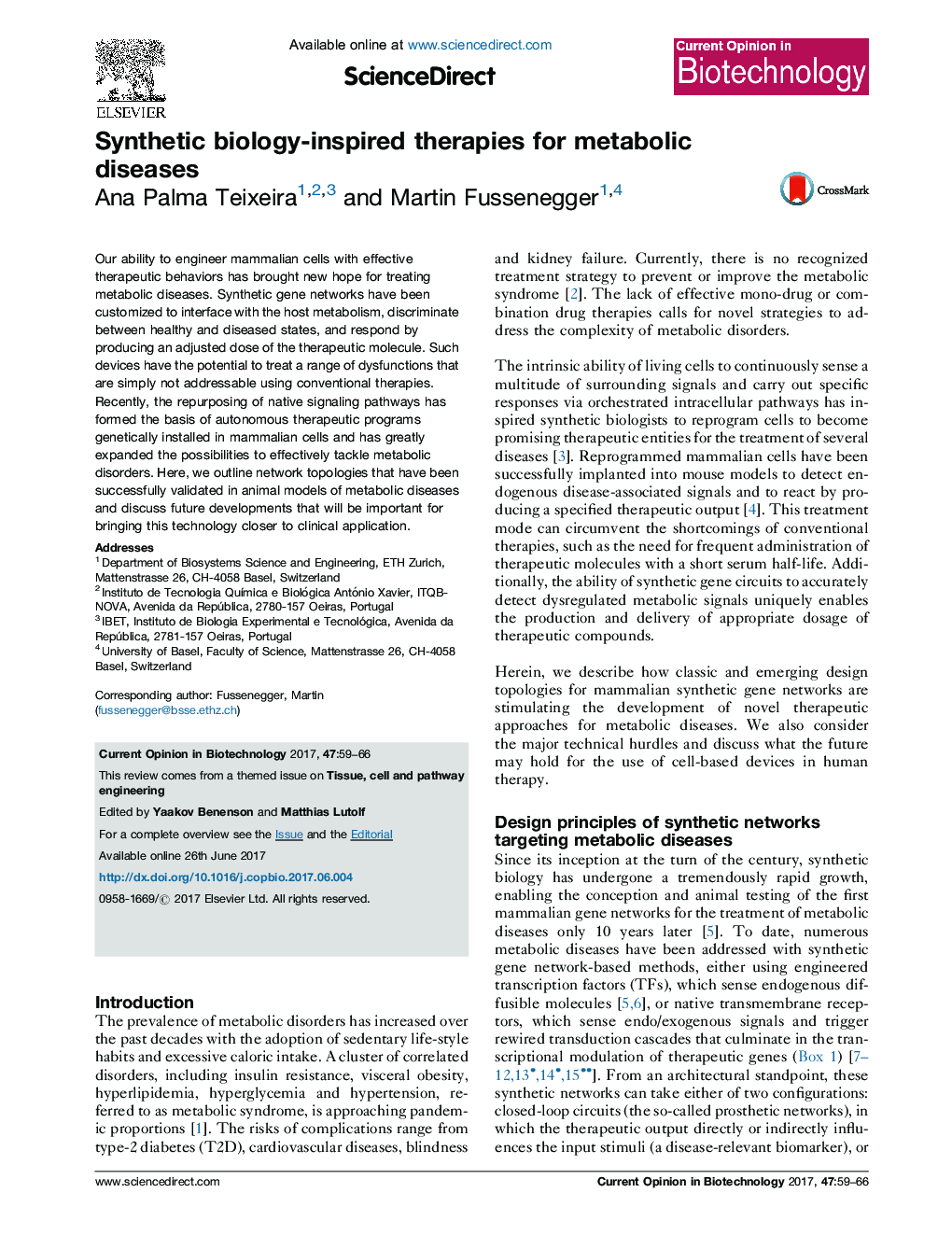| Article ID | Journal | Published Year | Pages | File Type |
|---|---|---|---|---|
| 6451423 | Current Opinion in Biotechnology | 2017 | 8 Pages |
â¢Programmed cells with synthetic gene networks are promising therapeutic devices.â¢Metabolic diseases have been treated preclinically with different network designs.â¢Recent focus on synthetic signaling cascades which sense and correct host pathological signals.â¢Intercellular communication systems will form the basis of more robust and safer devices.
Our ability to engineer mammalian cells with effective therapeutic behaviors has brought new hope for treating metabolic diseases. Synthetic gene networks have been customized to interface with the host metabolism, discriminate between healthy and diseased states, and respond by producing an adjusted dose of the therapeutic molecule. Such devices have the potential to treat a range of dysfunctions that are simply not addressable using conventional therapies. Recently, the repurposing of native signaling pathways has formed the basis of autonomous therapeutic programs genetically installed in mammalian cells and has greatly expanded the possibilities to effectively tackle metabolic disorders. Here, we outline network topologies that have been successfully validated in animal models of metabolic diseases and discuss future developments that will be important for bringing this technology closer to clinical application.
Graphical abstractDownload high-res image (191KB)Download full-size image
